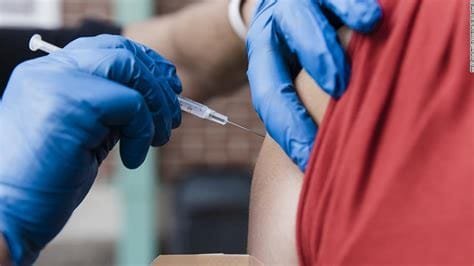Vaccination is one of the leading medical interventions, with millions of lives saved worldwide every year. Researchers have recently discovered a new approach called the “sugar vaccine” for host immune responses against bacterial pathogens. The article reports on sugar vaccines, their mechanism, applications, benefits, formulation, and future role in medicine.
1. What is a sugar vaccine?
A sugar vaccine utilizes an immunization approach based upon complex carbohydrates on the surface of bacteria and goes by the name polysaccharides that constitute essential elements of bacterial cell walls, thus making such elements prime targets for vaccines targeting bacterial infections.

While traditional vaccines often use an inactivated or weakened form of virus, protein, or whole bacteria, sugar vaccines focus on carbohydrate antigens, particularly those of high immune-inducing efficacy. It is hoped that such immunity may prevent infection primarily or even exclusively from bacterial invasions by limiting or stopping the spread of disease.
2. How does the sugar vaccine work?
The mechanism of a sugar vaccine depends on the immunity that can detect extrinsic antigens, which include carbohydrates around the bacteria. A sugar vaccine is introduced into the body carrying polysaccharide antigens that liken themselves to the outer form of the bacteria. The immune system detects these sugars as threats, causing a response.
Once exposed to the immune system, the immune system produces antibodies toward the bacterial sugars, preparing the body for future infections. In case the individual is later exposed to the bacteria in real life, his/her immune system recognizes the carbohydrate antigens and neutralizes the bacteria very fast before illness ensues.
3. Applications of Sugar Vaccines
Vaccines made from sugar appear promising in preventing bacterial diseases, especially for vulnerable populations like children and the elderly. Some of the major uses include.
Pneumococcal Disease:
bacterial pneumonia is caused by Streptococcus pneumoniae, a global health scourge. The sugar vaccines targeting the polysaccharide of this bacterium are used to prevent serious cases of bacterial infections.
Meningococcal Infections:
These infections by Neisseria meningitidis can cause life-threatening illnesses such as meningitis. Sugar vaccines are very effective in controlling outbreaks of meningococcal infections.
Hib:
The Hib vaccine is based on sugar antigens that protect a child from infections that would lead to respiratory illnesses that may result in pneumonia or meningitis.
Cholera and Typhoid:
Scientists are working on sugar-based vaccines for enteric diseases such as cholera and typhoid fever, prevalent in poor resource areas.
4. Advantages of Sugar Vaccines
Sugar vaccines do have many advantages over traditional protein or whole-cell vaccines:
More Targeted Immune Response:
Focusing on selected carbohydrate structures present in the bacteria, sugar vaccines produce a much more targeted immune response, thereby less likely to cause unnecessary inflammation.
Safe for the Immunocompromised:
Conventional vaccines built upon attenuated or live viruses or bacteria pose possible dangers to immunocompromised individuals. The sugars are, however, non-infectious and provide a safer alternative.
Fewer Side Effects:
Sugar vaccines are generally less likely to induce side effects compared with conventional vaccines since they do not utilize protein-based components, which are sometimes known to trigger allergic reactions in some persons.
Long-Lasting Immunity:
The sugar vaccines, especially those conjugated to carrier proteins (such as in conjugate vaccines), induce very strong and lasting immunity.
5. Preparations and Administration

Several preparations of the sugar vaccines exist:
Injectable Vaccines:
The most common route of sugar vaccines is injectable, which are usually given intramuscularly or subcutaneously. A large number of sugar vaccines in pneumococcal and meningococcal vaccines have been delivered through this route.
Oral Vaccines:
Most of the sugar vaccines, particularly those prepared against enteric pathogens like cholera, are now more recently being prepared in oral forms. Oral vaccines are easier to give and are more readily acceptable for mass immunization efforts.
Conjugate Vaccines:
The most useful method that can be utilized to develop or improve the effectiveness of a sugar vaccine is conjugation, which refers to attaching polysaccharide molecules to carrier proteins to create a conjugate vaccine. This is achieved in some vaccines, such as Hib and pneumococcal vaccines, that significantly increase immunological response in infants and young children.
6. Challenges in Sugar Vaccine Development
Sugar vaccines have numerous challenges despite the potential:
Complex Manufacturing:
The production of sugar vaccines is complex, requiring very advanced technologies to isolate and purify bacterial polysaccharides. Often this raises the cost of production and reduces accessibility, particularly for low-income countries.
Variable immune responses:
Some people, in particular those with weakened immunized hosts, are more likely to show poor immune responses to carbohydrate antigens. Researchers are trying to find a way of enhancing the effectiveness of sugar vaccines in these populations.
Cold chain requirements:
Like most vaccines, sugar vaccines typically require a cold chain for stability. Thus, distribution in most underdeveloped health systems is also challenging.
7. Future Prospects of Sugar Vaccines
The potential of sugar vaccines for bacterial diseases and beyond is promisingly being pursued by research currently ongoing.
Some of the future potential includes
Broad-spectrum bacterial vaccines:
Soon, scientists can design sugar vaccines that could target far more significant numbers of bacteria to protect multiple diseases in one shot.
Sugar-based Vaccines:
Beyond this work with infectious disease, sugar-based vaccines also promise important implications in the treatment of cancer. Many cancer cells bear unique carbohydrate antigens, whose expression the sugar-based vaccines can be designed to target, thus allowing an immune response for the eradication of the tumor.
New delivery systems, including nanoparticle-based delivery, are being explored to make sugar vaccines more effective and easier to administer, especially orally.
8. Conclusion

Sugar vaccines are of great importance in immunization strategy. They provide targeted protection against bacterial diseases with minimal side effects. Despite challenges, the development of sugar vaccines remains a huge promise for global health, particularly through the fight against infectious disease and even cancer. Sugar vaccines might be the future focal point of healthcare with continued research and innovation.



